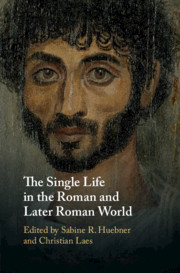Book contents
- The Single Life in the Roman and Later Roman World
- The Single Life in the Roman and Later Roman World
- Copyright page
- Contents
- Contributors
- Acknowledgements
- Introduction
- Demographic, Archaeological and Socioeconomic Approaches
- Being Single in the Roman World
- Singles in Judaism
- Late Antique Christianity: The Rise of the Ideal of Being Single
- Comparative Voices
- Bibliography
- General Index
- Index Locorum
- References
Bibliography
Published online by Cambridge University Press: 18 February 2019
- The Single Life in the Roman and Later Roman World
- The Single Life in the Roman and Later Roman World
- Copyright page
- Contents
- Contributors
- Acknowledgements
- Introduction
- Demographic, Archaeological and Socioeconomic Approaches
- Being Single in the Roman World
- Singles in Judaism
- Late Antique Christianity: The Rise of the Ideal of Being Single
- Comparative Voices
- Bibliography
- General Index
- Index Locorum
- References
Summary

- Type
- Chapter
- Information
- The Single Life in the Roman and Later Roman World , pp. 374 - 411Publisher: Cambridge University PressPrint publication year: 2019



